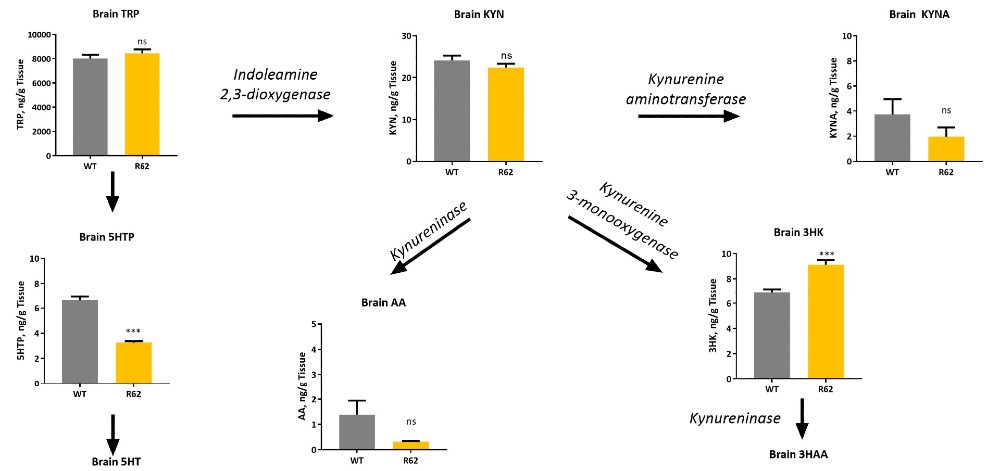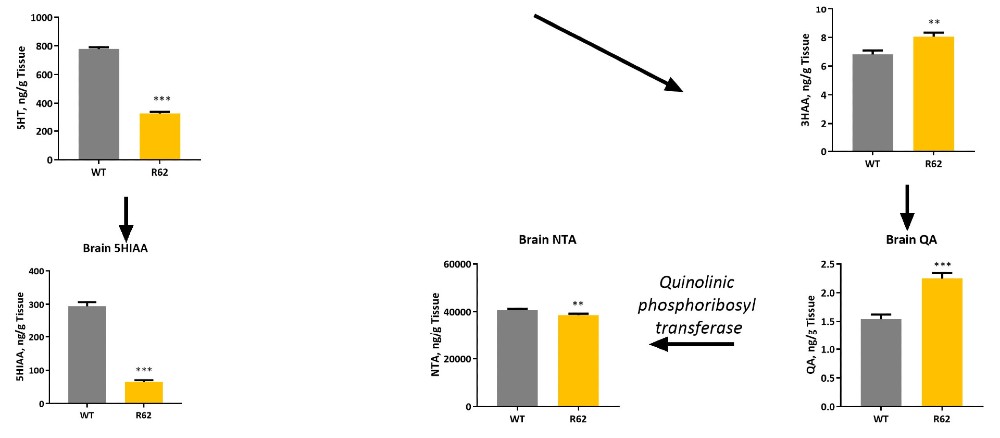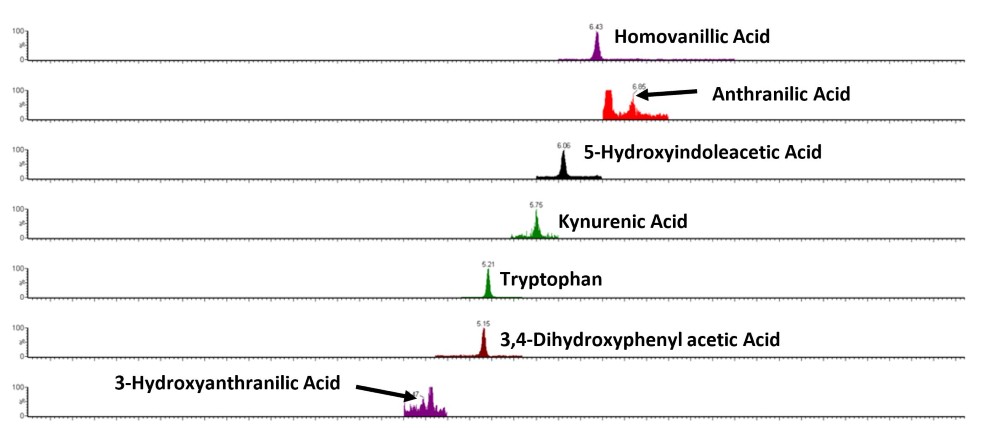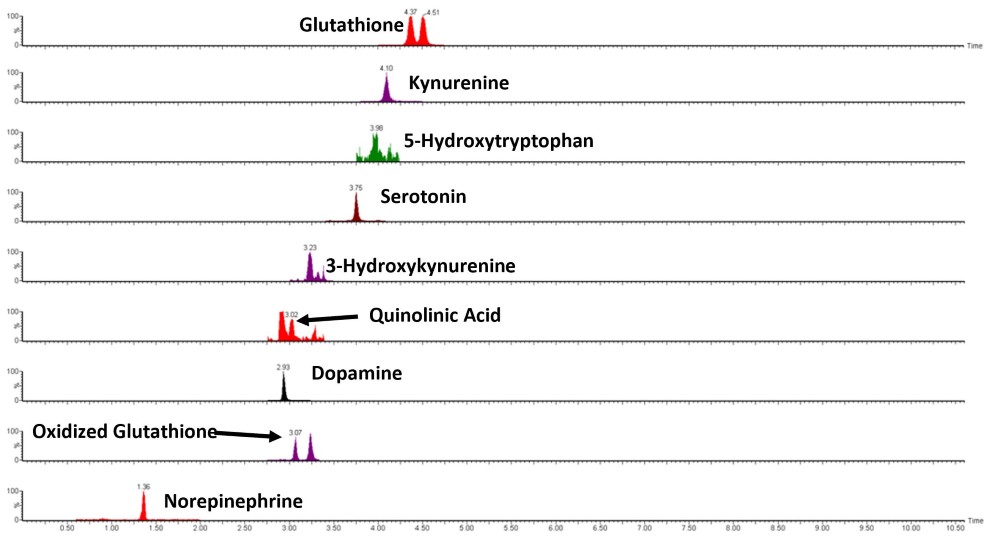Endogenous Molecules
Bioanalysis capabilities are focused on measurement of both endogenous neurochemicals and exogenous drug molecules utilizing either a combination of ultra performance liquid chromatography (UPLC) with tandem mass spectroscopy (MS/MS) or electrochemical detection (ECD). A variety of samples types are routinely handled including brain (whole, slices or dissected brain regions), plasma, CSF, peripheral organs, microdialysates, cell cultures, urine, enzyme screens, for either mice, rats, or humans.
The following are endogenous molecules for which bioanalytical techniques are available at Psychogenics Inc. Additional molecules of interest are available upon request.
Kynurenine Metabolites
Monoamines (dopamine, serotonin, noradrenaline and metabolites)
Amino Acids (glutamate, GABA, D- and L-Serine, cysteine)
Oxidative Stress Markers (glutathione)
Lipids : corticosteroids
Adenosine and other purines
1. Kynurenine metabolites
Huntington Disease Model R6/2
- Dysregulation of the kynurenine pathway yields several neuroactive intermediates (quinolinic acid, kynurenic acid) which are associated with neuroinflammation disorders (Depression, AD, HD, Schizophrenia, PD, ALS).
- Scientists at PsychoGenics have developed highly sensitive and reproducible UPLC-MS/MS measurements of kynurenine pathway metabolites (KP Mets) with superior limits of detection (LOD) compared to published methods.
Alterations of KP Mets observed in the striatum of Huntington’s disease model, 3 months old R6/2 vs. wild type mice.
LC/MS/MS results for measures of kynurenine and related analytes in brain tissue of the R6/2 mouse model of Huntington’s disease vs. wild type mice. Significant impact is observed on these important neurochemicals in the R6/2 mice. Same measures available in microdialysis studies, and other matrices, all with the option to measure drug level.
2. Monoamines
Dopamine, noradrenaline, serotonin and their metabolites can be readily determined in brain tissue, plasma and microdialysates utilizing a UPLC-MS/MS or UPLC-ECD technique. Tissue samples (as small as 3mg) and plasma (volumes as low as 20uL) are prepped for analysis using an ultrafiltration procedure. Microdialysates do not require a cleanup procedure and are simply combined with an appropriate internal standard prior to injection.
Dopamine and metabolites in Striatum from MPTP study
- Acute treatment with MPTP, a neurotoxic agent that produces striatal dopamine depletion resulting in parkinsonism like symptoms, significantly decreased striatal dopamine (DA) and the metabolites (DOPAC and HVA) as measured by a robust sensitive LC-MS/MS technique.
- Acute treatment of Rasageline prior to MPTP administration protected dopaminergic neuron. Rasagiline most likely exerts its protective effects by monoamine oxidase B (MAO-B) inhibition.
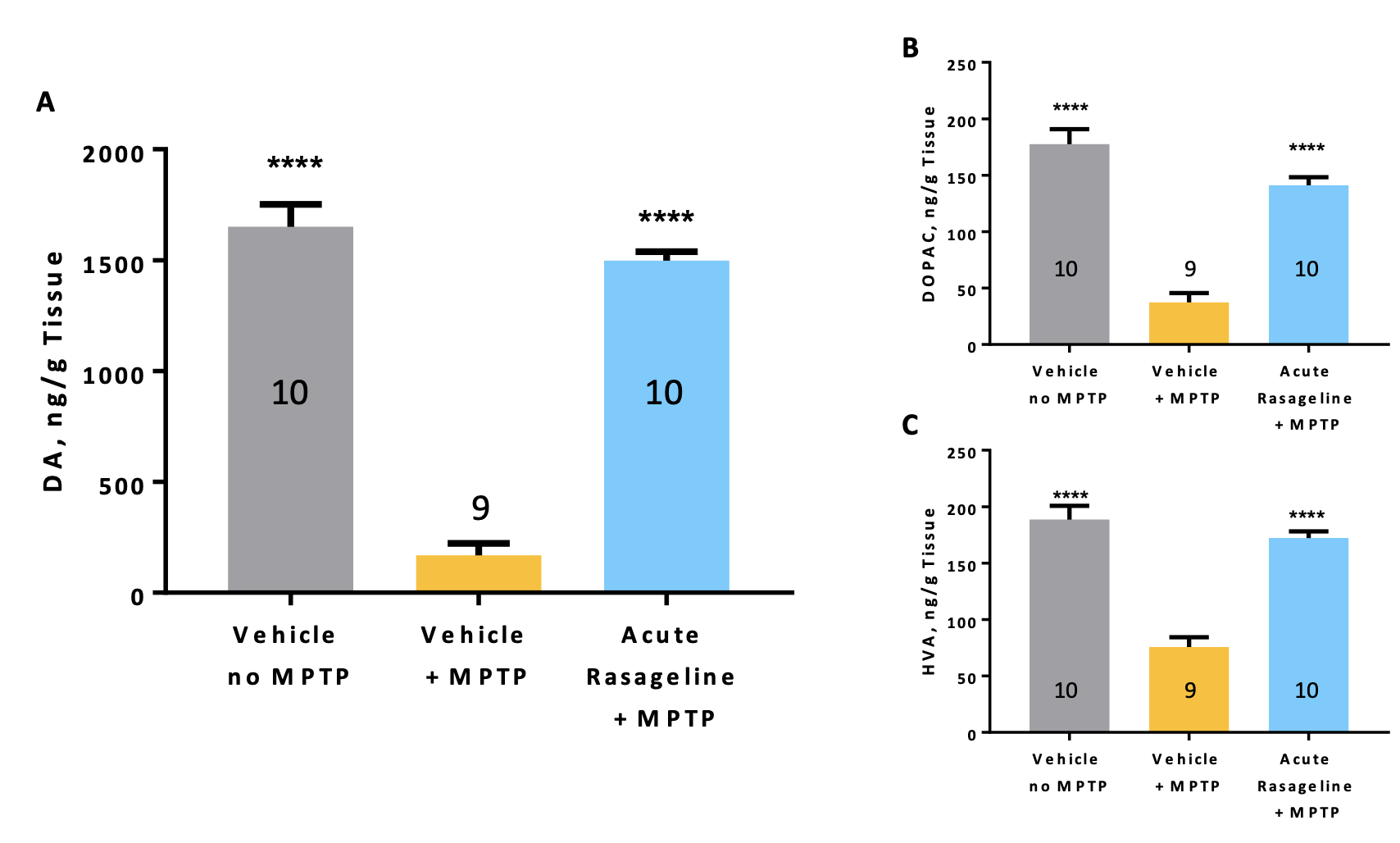
Acute treatment with Rasageline completely recovered (A) striatal DA, (B) DOPAC, and (C) HVA in MPTP-treated mice. C57BL6 mice were treated acutely with either vehicle or 2.5mg/kg Rasageline (IP). MPTP lesioning was followed by MPTP administration via IP route, 4x every 2 hours. (one-way ANOVA, asterisks indicate the result of Tukey’s multiple comparisons test).
3. Combined measures of neurochemicals/biomarkers
A UPLC-MS/MS method has been developed which combines the measure of numerous potential biomarkers (KP metabolites, DA metabolites, 5HT metabolite, NE, oxidative stress markers (GSH and GSSG)) in one 10 minute run. Addition of other biomarkers or drug molecules to the method, has also been demonstrated.
UPLC-MS/MS chromatographic traces for analysis of Line D mice striatum after 10x dilution and ultrafiltration. Majority of analytes of interest are readily measured with some close to but above the LLOQ.

